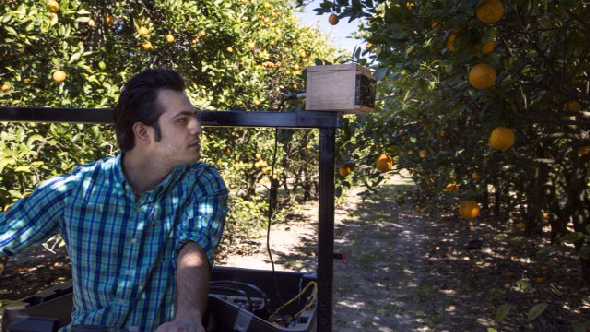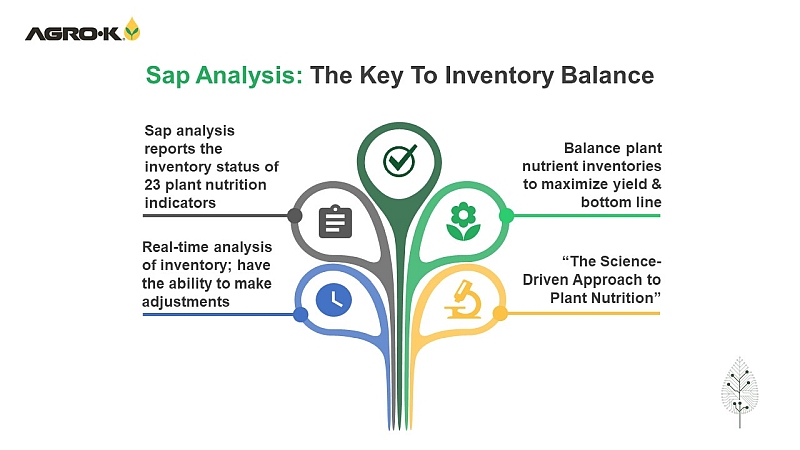How To Expose Citrus Greening Before It Appears
Nearly two years ago, news arose that University of Florida researchers had developed a tool to help growers combat citrus greening: an electronic sensor. Today, a new study shows the time-lapse polarized imaging system may indeed detect greening before the plant’s leaves show symptoms.

Former UF post-doctoral research associate Alireza Pourreza utilizes the vision sensor he helped to develop to detect citrus greening.
Photo courtesy of UF/IFAS
For the study, Won Suk “Daniel” Lee and Alireza Pourreza were seeking to know how early citrus leaves with greening can be detected while they are pre-symptomatic. So they inoculated plants with the greening disease and put those leaves through a time-lapse imaging system.
There, they found starch in the leaves, an early sign of greening, said Pourreza, a former post-doctoral researcher in the UF/IFAS Agricultural and Biological Engineering Department. In their study, UF/IFAS researchers detected greening about one month after they infected the trees, he said.
“Citrus growers in California, Florida, and Texas are very interested in employing this detection method to protect their groves,” said Pourreza, who currently works for the University of California Kearney Agricultural Research and Extension Center. “This methodology was basically designed to show the greening hot spots in the grove.”
That way, growers can diagnose the disease promptly. The most accurate lab test for detecting citrus greening remains the polymerase chain reaction, a DNA-amplifying technique.
UF/IFAS researchers presented findings from the study at the International Federation of Automatic Control Conference on Sensing, Control and Automation for Agriculture in August.
Joining Pourreza and Lee on the study were Ed Etxeberria, an entomology professor at the UF/IFAS Citrus Research and Education Center in Lake Alfred and Yao Zhang, a visiting scientist from the China Agricultural University.









